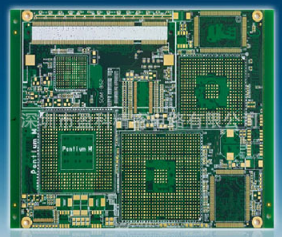1 Overview
The purpose of this document is to explain the printed circuit board design process and some precautions using PADS's printed circuit board design software PowerPCB, and to provide design specifications for designers in a working group to facilitate communication and mutual inspections between designers .
2 Design process
The PCB design process is divided into six steps: netlist input, rule setting, component layout, wiring, inspection, review, and output.
2.1 Netlist input
There are two ways to enter the netlist. One is to use PowerLogic's OLE PowerPCB CONnection function, select SendNetlist, and apply the OLE function to keep the schematic diagram and PCB diagram consistent at any time to minimize the possibility of errors. Another method is to load the netlist directly in PowerPCB, select File->Import, and input the netlist generated by the schematic diagram.

2.2 Rule settings
If the PCB design rules have been set in the schematic design stage, there is no need to set these rules, because when the netlist is input, the design rules have been imported into PowerPCB along with the netlist. If the design rules are modified, the schematic diagram must be synchronized to ensure that the schematic diagram is consistent with the PCB. In addition to design rules and layer definitions, there are also some rules that need to be set, such as PadStacks, which requires modification of the size of standard vias. If the designer creates a new pad or via, layer 25 must be added.
Note: PCB design rules, layer definitions, via settings, and CAM output settings have been made into the default startup file, named Default.stp. After the netlist is entered, according to the actual situation of the design, assign the power network and ground to the power layer And stratum, and set other advanced rules. After all the rules are set, in PowerLogic, use the Rules From PCB function of OLE PowerPCB Connection to update the rule settings in the schematic to ensure that the rules of the schematic and PCB are consistent.
2.3 Component layout
After the netlist is entered, all components will be placed at the zero point of the work area and overlapped together. The next step is to separate these components and arrange them neatly according to some rules, that is, component layout. PowerPCB provides two methods, manual layout and automatic layout.
2.3.1 Manual layout
1. Draw the board outline (Board Outline) for the structure size of the printed circuit board of the tool.
2. Disperse the components (Disperse Components), the components will be arranged around the edge of the board.
3. Move and rotate the components one by one, put them inside the edge of the board, and place them neatly according to certain rules.
2.3.2 Auto Layout
PowerPCB provides automatic layout and automatic local cluster layout, but for most designs, the effect is not ideal and it is not recommended.
2.3.3 Matters needing attention
a. The first principle of the layout is to ensure the wiring rate, pay attention to the connection of the flying wires when moving the device, and put the devices with the connection relationship together
b. Separate digital devices from analog devices and keep them as far away as possible
c. The decoupling capacitor is as close as possible to the VCC of the device
d. When placing the device, consider future soldering, not too dense
e. Use the Array and Union functions provided by the software more to improve layout efficiency
2.4 Wiring
There are also two ways of wiring, manual wiring and automatic wiring. The manual wiring function provided by PowerPCB is very powerful, including automatic pushing and online design rule checking (DRC). Automatic wiring is performed by Specctra's wiring engine. Usually these two methods are used together. The common steps are manual-automatic-manual.
2.4.1 Manual wiring
1. Before automatic wiring, first hand-lay some important networks, such as high-frequency clocks, main power supplies, etc. These networks often have special requirements for wiring distance, line width, line spacing, shielding, etc.; in addition, some special packaging, Such as BGA, it is difficult to arrange automatic wiring regularly, and manual wiring must be used.
2. After the automatic routing, the PCB routing needs to be adjusted by manual routing.
2.4.2 Automatic wiring
After the manual wiring is over, the remaining network is handed over to the automatic router for cloth. Select Tools->SPECCTRA, start the interface of the Specctra router, set the DO file, and press Continue to start the automatic wiring of the Specctra router. After the end, if the wiring rate is 100%, then you can manually adjust the wiring; if not If it reaches 100%, it indicates that there is a problem with the layout or manual wiring, and the layout or manual wiring needs to be adjusted until all the connections are made.
2.4.3 Matters needing attention
a. Make the power cord and ground wire as thick as possible
b. Try to connect the decoupling capacitor directly to VCC
c. When setting the DO file of Specctra, first add the Protect all wires command to protect the manually clothed wires from being rewired by the automatic router
d. If there is a mixed power layer, the layer should be defined as Split/mixed Plane, and it should be divided before wiring. After wiring, use PourManager's Plane Connect for copper pour
e. Set all device pins to thermal pad mode by setting Filter to Pins, select all pins, modify properties, and tick the Thermal option
f. When manually routing, turn on the DRC option and use dynamic routing (Dynamic Route)
2.5 Inspection
The items to be checked include Clearance, Connectivity, HighSpeed and Plane. These items can be selected by Tools->VerifyDesign. If the high-speed rule is set, it must be checked, otherwise you can skip this item. If an error is detected, the PCB layout and PCB wiring must be modified.